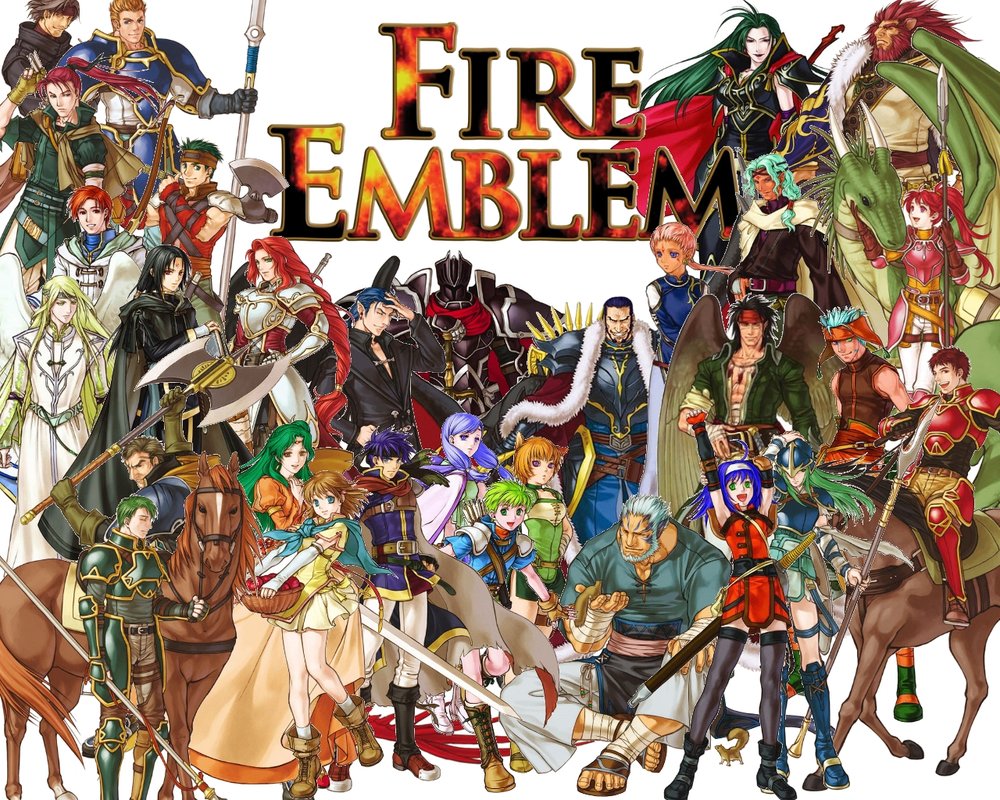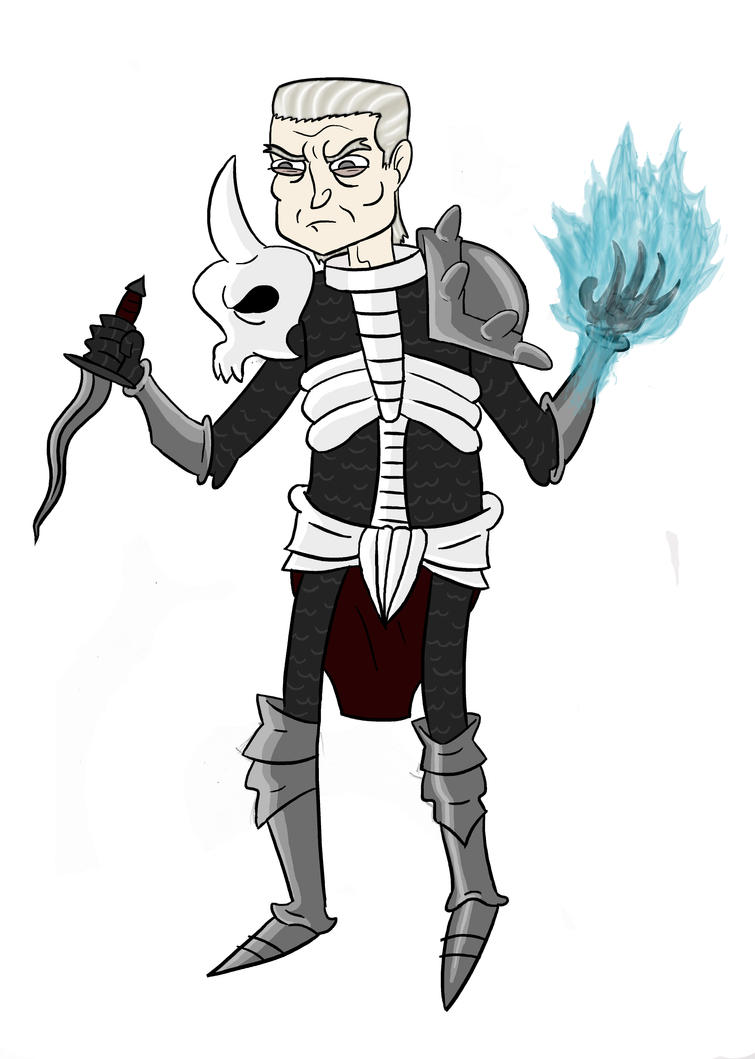How To Kill Your Characters
Very early on in the Whale Hammer story, before we had a name, and even well before Pete S had joined the team, we knew that our first major game was going to be a turn-based tactics game. Both Pete C and I grew up playing these games, and being turn-based makes the games a bit simpler to design, so they’re more manageable choice for a first project. Another reason we liked turn-based tactics as a project, is that the few existing tactics games haven’t changed much over the past 15 years, so there’s plenty of room for improvement. I especially see opportunity to make the games less punishing to the player.
The death of a character during combat is something that I really don’t think existing turn-based tactics games execute on very well at all, and is something I think we can really improve on. Anyone who’s played a game from the Fire Emblem franchise will know how frustrating those games can be, when twenty minutes into a level, a character is killed. In the Fire Emblem universe when a character dies, they die for good. So as the player, you’re faced with a fairly unpleasant choice: let the character die, or restart the level, rendering the chunk of time you’d spent on the level wasted.
A notable exception to this trend is XCOM: Enemy Unknown, which deals with character deaths by making each individual character – and hence, their dying – completely inconsequential to the game’s story. While this worked for XCOM, we want our game to be very character-driven, so it’s not really an option for us.
First of all, I want to go into more detail about why you don’t want to permanently kill your characters. Let’s say I’m making a turn-based tactics game – We’ll call it “Epic”. Epic will be the story of a tight-knit band of mercenaries who get drawn into an aeons-long struggle between Good and Evil, and find themselves playing a pivotal role. This is a completely original idea that I thought of just now and in no way lifted from anything else. Our hero in Epic will be Jason, leader of the mercenary band, with his lieutenants Freya and Seth. Now, because we want this game to feel epic, we need to raise the stakes somehow, and letting characters die seems a good way to do that. So, if a character other than Jason dies in battle, they die permanently (if Jason dies, the player hits a Game Over screen, because he’s too important to the plot to be dead). Along with raising the stakes, this has the added benefit of adding consistency to the game world. All the enemy soldiers we’re killing won’t be coming back to life, after all.
However, without even mentioning the problem about player frustration I outlined above, we start to have to jump through some pretty big hoops to make this work. For starters, we’ll need to add a steady stream of playable characters. We can’t have the player running out of playable characters for a mission. But then, who are all these characters, and why do we care about them? This is a problem Fire Emblem really suffers from. By the final act of a Fire Emblem game, you can often have a roster of upwards of 30 different guys, many of whom have played literally no role in the story. Each of these characters has some kind of back-story, but there isn’t any reason for the player to care about them, unless they’re being used regularly in combat. To compound that issue, we also have the problem that there’s not enough development of the characters the player most cares about. In any game, you only have a limited amount of time to spend exploring characters, and having that many characters inevitably means that some will be forgotten.
In addition to this, we presumably do have some plot-driving playable characters. Jason is the obvious one in Epic, but Freya and Seth are also going to be relevant to the story. And presumably, they’ll have an ally from the forces of Good. We’ll call him Gabriel. What if any of them die? Who’s going to deliver their dialogue? Do we just pass it on to some other character and hope that works? But then what if that guy dies? Point being: if your game is driven by story, and if you as the storyteller don’t have control over if or when the characters die, you’re going to lose control over your story.
So if you can’t have your characters die, then what happens when they run out of health? They’re obviously removed from the mission, but what then? Are they immediately available for the next mission? That’s not great for a couple of reasons. First, it sucks the tension out of the combat, because the player has less incentive to try and keep everyone alive. You still can’t throw units into the meat grinder – you’ll end up without enough units to finish the mission – but there’s less sense that you’re protecting these people, and trying to keep them from harm. More importantly, it makes no sense. Why don’t our guys die? The other guys die. Any evil soldier we kill isn’t going to come back later, so why are our guys apparently immortal? And then, if you want to kill a character as part of the story, that makes even less sense. Going back to Epic as our example, let’s say that we want to have Seth die at a critical moment in the game, in order to bring into question whether this fight is really worth it for Jason and his friends. The problem is, Seth’s already died like, four times in missions. Why does this death stick, where the others didn’t? This is detrimental to any sense of immersion the player has, which we really want to avoid, given that we’re making a story-focused game.
Clearly, what’s needed is some kind of middle-ground approach. There needs to be a consequence for letting characters fall in battle, but it can’t feel too dire. One of the solutions I like the most is to make characters temporarily unavailable if they’re felled in battle. For example, let’s say Freya is felled in a vicious, drawn-out conflict with a horde of zombies. We can’t have her die, so instead she’s critically wounded, and has to take some time out from battle to recover. So in our next fight, against Gerome, the mad necromancer animating these zombies, she’s unavailable, and we have to use someone else. This gives our players a reason to keep characters alive, and makes slightly more sense than them being magically immortal. It’s still not perfect, though – we haven’t really addressed the whole ‘how do these guys consistently not die?’ idea. We’ve also introduced another problem: What if Freya, Seth and Gabriel all go down fighting the horde of zombies, along with a few other characters? Who’s left to take on Gerome and the rest of his horde? In order to ensure a constant stream of playable characters, we end up with the same problem as character death, namely a bloated roster.
It seems like we really do need some guys who will die, and who can be easily replaced. Let’s introduce some unnamed mercenaries from Jason’s company. We don’t know who these guys are, and truth be told, we don’t really care. Their job will be to act as completely replaceable guys, who the player can use as front-line warriors, without having to worry about having enough guys for the next mission. These nameless mercenaries play the additional role of allowing us to scale up our battles without having to have more named characters. Another plus is that they make our named characters feel more like leaders, something that can be further emphasised with gameplay mechanics. We get to see Jason, Freya, Seth and Gabriel lead a great army into battle, and have them make a difference in fights where one man shouldn’t be able to turn the tide, further reinforcing the idea that these guys are warriors of incredible strength and skill.
We’ve now got the feeling that our soldiers are indeed mortal, without named characters dying, and we’ve even managed to make our battles seem more epic in scale. Admittedly, there’s still some sense of disconnect, with named characters being unable to die, but there is now a sense of the company’s mortality. This means that combat scenarios can be designed such that named characters rarely fall in battle, effectively meaning that the player barely sees this logic gap, and (hopefully) isn’t really bothered by it.
So what we end up with is essentially two systems used to ensure our named characters stay alive, while still having a sense of peril and maintaining immersion. One system adds a consequence to the defeat of a named character, without removing them completely from the game. The other gives our army soldiers who do die, making the whole thing feel more like a real war.
What do you guys think about character death in games? What solutions have you seen that you liked? Let us know in the comments.
-Tom C.




That is a really good point.
Paper Mario; TTYD has a pretty good system for character deaths!
If Mario himself dies, we get a game over, but Mario’s allies become unplayable until you either reach a bed to sleep in, or use items to heal them outside of battle.
And switching out characters takes away your next turn, giving the enemy two attacks, making you think wisely about which characters you want to head into battle with and potentially do without for the next few fights.
It has the right amount of tension without being a lost cause.
That does sound pretty good. Tension without frustration and in the Mario universe they don’t really have to worry about whether or death is permanent, because nothing in it makes a lick of sense. Paper Mario has been on my list of games to play for a good eight years now…